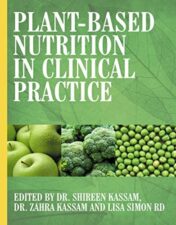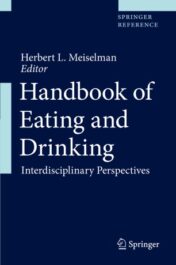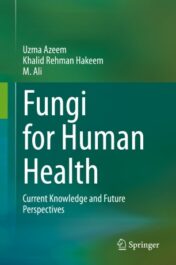Zero Hunger 2020 Original pdf
$15
Zero Hunger 2020 Original pdf
The problems related to the process of industrialisation such as biodiversity depletion, climate change and a worsening of health and living conditions, especially but not only in developing countries, intensify. Therefore, there is an increasing need to search for integrated solutions to make development more sustainable. The United Nations has acknowledged the problem and approved the “2030 Agenda for Sustainable Development”. On 1st January 2016, the 17 Sustainable Development Goals (SDGs) of the Agenda officially came into force. These goals cover the three dimensions of sustainable development: economic growth, social inclusion and environmental protection.
The Encyclopedia of the UN Sustainable Development Goals comprehensively addresses the SDGs in an integrated way. It encompasses 17 volumes, each devoted to one of the 17 SDGs. This volume addresses SDG 2, namely “End hunger, achieve food security and improved nutrition and promote sustainable agriculture” and contains the description of a range of related terms, to allow for a better understanding and foster knowledge.
Our planet produces enough food to feed everyone. Malnutrition and hunger are the result of inappropriate food production processes, bad governance and injustice. SDG 2 seeks to guarantee quality and nutritious food to ensure healthy life by adopting a holistic approach that involves various actions targeting different actors, technologies, policies and programs. These initiatives have to face challenges coming from extensive environmental degradation, loss of biodiversity and the interrelated effects of climate change.
- End hunger and ensure access by all people, in particular the poor and people in vulnerable situations, including infants, to safe, nutritious and sufficient food all year round
- End all forms of malnutrition, including achieving the internationally agreed targets on stunting and wasting in children under 5 years of age, and address the nutritional needs of adolescent girls, pregnant and lactating women and older persons
- Double the agricultural productivity and incomes of small-scale food producers, in particular women, indigenous peoples, family farmers, pastoralists and fishers, including through secure and equal access to land, other productive resources and inputs, knowledge, financial services, markets and opportunities for value addition and non-farm employment
- Ensure sustainable food production systems and implement resilient agricultural practices that increase productivity and production, that help maintain ecosystems, that strengthen capacity for adaptation to climate change, extreme weather, drought, flooding and other disasters and that progressively improve land and soil quality
- Maintain the genetic diversity of seeds, cultivated plants and farmed and domesticated animals and their related wild species, including through soundly managed and diversified seed and plant banks at the national, regional and international levels, and promote access to and fair and equitable sharing of benefits arising from the utilization of genetic resources and associated traditional knowledge, as internationally agreed
- Increase investment, including through enhanced international cooperation, in rural infrastructure, agricultural research and extension services, technology development and plant and livestock gene banks in order to enhance agricultural productive capacity in developing countries, in particular least developed countries
- Correct and prevent trade restrictions and distortions in world agricultural markets, including through the parallel elimination of all forms of agricultural export subsidies and all export measures with equivalent effect, in accordance with the mandate of the Doha Development Round
- Adopt measures to ensure the proper functioning of food commodity markets and their derivatives and facilitate timely access to market information, including on food reserves, in order to help limit extreme food price volatility
Related Products
Nutrition Dietetics Books
Plant based Nutrition in Clinical Practice 2022 Epub+converted pdf
Nutrition Dietetics Books
Nutrition Dietetics Books
Wardlaw’s Contemporary Nutrition, 12th edition 2021 Original PDF
Nutrition Dietetics Books
Mediterranean Diet Cookbook For Dummies, 3rd Edition 2022 Original PDF
Nutrition Dietetics Books
Krause and Mahan’s Food and the Nutrition Care Process, 16th edition 2022 Original PDF
Nutrition Dietetics Books
Nutrition Dietetics Books
Nutrition and Sensation, 2nd Edition 2022 epub+converted pdf
Nutrition Dietetics Books
Alimentation de l’enfant et de l’adolescent (French) 2022 Original PDF
Nutrition Dietetics Books
Cooking for Health and Disease Prevention: From the Kitchen to the Clinic 2022 Original PDF
Nutrition Dietetics Books
Cooking for Health and Disease Prevention: From the Kitchen to the Clinic 2022 Epub+ converted pdf
Nutrition Dietetics Books
Tackling Obesity and Overweight Matters in Health and Social Care 2022 Original PDF
Nutrition Dietetics Books
Nutritional and Integrative Strategies in Cardiovascular Medicine 2022 Original pdf
Nutrition Dietetics Books
Nutrition Dietetics Books
Transforming Food Environments 1st edition 2022 Original pdf
Nutrition Dietetics Books
Nutrition Dietetics Books
Probiotics for Human Nutrition in Health and Disease 1st Edition 2022 Original pdf
Nutrition Dietetics Books
Food: The Chemistry of its Components (6th Edition) 2015 Epub + Converted Pdf
Nutrition Dietetics Books
Wardlaw’s Contemporary Nutrition, 12th Edition 2022 Epub+Converted pdf
Nutrition Dietetics Books
Nutrition Dietetics Books
Nutrition, Weight, and Digestive Health: The Clinician’s Desk Reference 2022 Original PDF
Nutrition Dietetics Books
Nutrition Dietetics Books
Nutritional and Integrative Strategies in Cardiovascular Medicine 2021 Original PDF
Nutrition Dietetics Books
Nutrition Dietetics Books
Biochemical, Physiological, and Molecular Aspects of Human Nutrition, 4e 2019 EPUB & converted pdf
Nutrition Dietetics Books
Nutrition Dietetics Books
Food for Thought: The Integrated Practitioner 2013 Original PDF
Nutrition Dietetics Books
Critical Perspectives in Food Studies, 3rd Edition 2021 EPUB + Converted PDF
Nutrition Dietetics Books
Nutrition Dietetics Books
The Athlete’s Gut: The Inside Science of Digestion, Nutrition, and Stomach Distress 2020 Mp3 files
Nutrition Dietetics Books
Wardlaw’s Perspectives in Nutrition 12th Edition 2022 Original pdf
Nutrition Dietetics Books
Nutrition and Functional Foods in Boosting Digestion, Metabolism and Immune Health 2021 Original PDF
Nutrition Dietetics Books
Routledge Handbook of Critical Obesity Studies 2021 Original PDF
Nutrition Dietetics Books
Nutrition in Clinical Practice Fourth Ed 2021 epub3+converted pdf
Nutrition Dietetics Books
Nutrition Dietetics Books
Nutrition Dietetics Books
Wound Healing, Tissue Repair, and Regeneration in Diabetes 2020 Original pdf
Nutrition Dietetics Books
Nutrition Dietetics Books
Therapeutic, Probiotic, and Unconventional Foods 2018 Original pdf
Nutrition Dietetics Books
Steviol Glycosides Production, Properties, and Applications 2020 Original pdf
Nutrition Dietetics Books
Nutrition Dietetics Books
Nutrition Dietetics Books
Roselle (Hibiscus sabdariffa) Chemistry, Production, Products, and Utilization 2021 Original pdf
Nutrition Dietetics Books
Nutrition Dietetics Books
Pulsed Electric Fields to Obtain Healthier and Sustainable Food for Tomorrow 2020 Original pdf
Nutrition Dietetics Books
Proteins: Sustainable Source, Processing and Applications 2019 Original pdf
Nutrition Dietetics Books
Probiotics and Prebiotics in Foods Challenges, Innovations, and Advances 2021 Original pdf
Nutrition Dietetics Books
Present Knowledge in Nutrition Volume 2: Clinical and Applied Topics in Nutrition 2020 Original pdf
Nutrition Dietetics Books
Present Knowledge in Nutrition Volume 1: Basic Nutrition and Metabolism 2020 Original pdf
Nutrition Dietetics Books
The Practical Handbook of Perioperative Metabolic and Nutritional Care 2019 Original pdf
Nutrition Dietetics Books
Pathology Oxidative Stress and Dietary Antioxidants 2020 Original pdf
Nutrition Dietetics Books
Oncological Functional Nutrition Phytochemicals and Medicinal Plants 2021 Original pdf
Nutrition Dietetics Books
Nutrition Dietetics Books
Nutrition Economics Principles and Policy Applications 2017 Original pdf
Nutrition Dietetics Books
Nutrition Dietetics Books
Mineral Composition and Radioactivity of Edible Mushrooms 2019 Original pdf
Nutrition Dietetics Books
The Mediterranean Diet An Evidence-based Approach 2020 Original pdf
Nutrition Dietetics Books
The Interaction of Food Industry and Environment 2020 Original pdf
Nutrition Dietetics Books
Nutrition Dietetics Books
Glucosinolates: Properties, Recovery, and Applications 2019 Original pdf
Nutrition Dietetics Books
Nutrition Dietetics Books
Functional Foods in Cancer Prevention and Therapy 2020 Original pdf
Nutrition Dietetics Books
Nutrition Dietetics Books
Flour and Breads and their Fortification in Health and Disease Prevention 2019 Original pdf
Nutrition Dietetics Books
Environmental Impact of Agro-Food Industry and Food Consumption 2021 Original pdf
Nutrition Dietetics Books
Dietary Sugar, Salt and Fat in Human Health 2020 Original pdf
Nutrition Dietetics Books
Dietary Fiber: Properties, Recovery, and Applications 2019 Original pdf
Nutrition Dietetics Books
Nutrition Dietetics Books
Williams’ Basic Nutrition & Diet Therapy, 16th Edition 2021 Original pdf
Nutrition Dietetics Books
The Prevention of Cardiovascular Disease Through the Mediterranean Diet 2018 original pdf
Nutrition Dietetics Books
Nutrición clínica geriátrica (Spanish Edition) 2020 Epub and converted pdf
Nutrition Dietetics Books
Lifestyle Medicine: Essential MCQs for Certification in Lifestyle Medicine 1st Ed 2021 Original pdf
Nutrition Dietetics Books
Ethnic Fermented Foods and Beverages of India: Science History and Culture 2020 Original pdf
Nutrition Dietetics Books
Sicilian Street Foods and Chemistry The Palermo Case Study 2020 Original pdf
Nutrition Dietetics Books
The Potato Crop Its Agricultural, Nutritional and Social Contribution to Humankind 2020 Original pdf
Nutrition Dietetics Books
Food Science, Technology and Nutrition for Babies and Children 2020 Original pdf
Nutrition Dietetics Books
Medicinal, Aromatic and Stimulant Plants 2020 Original pdf+videos
Nutrition Dietetics Books
Clinical and Preclinical Models for Maximizing Healthspan Methods and Protocols 2020 Original pdf
Nutrition Dietetics Books
Accelerated Plant Breeding, Volume 2 Vegetable Crops 2020 Original pdf
Nutrition Dietetics Books
Handbook of Eating and Drinking Interdisciplinary Perspectives 2020 Original pdf
Nutrition Dietetics Books
Nutrition Dietetics Books
Spectroscopic Techniques & Artificial Intelligence for Food and Beverage Analysis 2020 Original pdf
Nutrition Dietetics Books
Obesity and Diabetes Scientific Advances and Best Practice 2020 Original pdf
Nutrition Dietetics Books
Nutrition Dietetics Books
Brassica Improvement Molecular, Genetics and Genomic Perspectives 2020 Original pdf
Nutrition Dietetics Books
Fungi for Human Health Current Knowledge and Future Perspectives 2020 Original pdf
Nutrition Dietetics Books
Antioxidants in Vegetables and Nuts – Properties and Health Benefits 2020 Original pdf







































































































